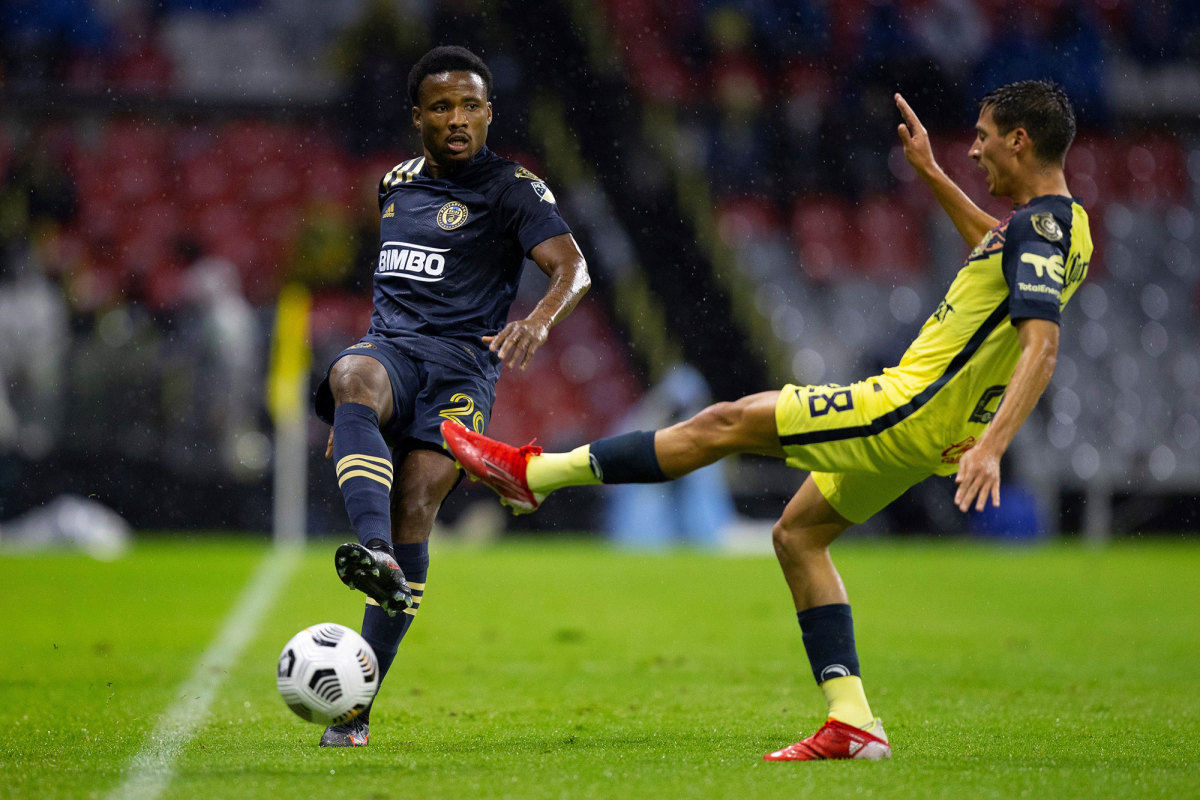MLS Still Looking to Close Competitive Gap With Liga MX As Their Partnership Grows

On Wednesday night in Los Angeles, MLS players might enjoy a rare competitive advantage against their traditional tormenters from south of the border.
This uniquely American All-Star Game thing represents uncharted territory for Liga MX, which is participating in the annual event for the first time. The match between the two select teams, postponed from its original 2020 time slot by the pandemic, will include several MLS players with All-Star experience and a manager, LAFC’s Bob Bradley, who’s coached the game before. Others making their maiden appearance, especially the U.S. players, will at least be comfortable with the concept.
For Liga MX, however, this midseason exhibition at Banc of California Stadium probably will feel a bit strange. The All-Star Game is a friendly played alongside foes, involving hastily assembled teams that’ll never exist again. There’s a concert and a skills contest. How hard are you supposed to try? How much should you care? Does it make sense to lunge for that 50-50 ball? Any interest in that 40-yard recovery run?
Maybe as the Liga MX side pauses to ponder these questions, the hosts will pounce and get the upper hand. Then MLS will be the one in uncharted territory. Because when it comes to games against Liga MX—especially competitive ones with real stakes—MLS never seems to hold the advantage. And that long-term imbalance of power hovers over Wednesday’s showcase, which is part of an enthusiastic and burgeoning partnership between the two leagues.

Partnership implies parity. Any productive, bilateral relationship should be somewhat symbiotic, involving giving, taking and growth. The economic benefits of an alignment between Concacaf’s two overlords are obvious and make perfect sense. Liga MX wants access to U.S. markets, where its traditional teams have tens of millions of fans. And MLS seeks greater traction among a similar but vital demographic—fans who may live in the U.S. or Canada but who currently prefer a Liga MX telecast to an MLS ticket.
There’s been speculation about a potential merger, but anything that dramatic likely is years away (and it’s unclear whether there’s any public appetite for it). In the meantime, growth will be driven by content. This year’s All-Star Game is the least competitive of a series of long-term competitive initiatives anchored by the Campeones Cup, an annual super cup game between the reigning MLS Cup and Campeon de Campeones winners, and the Leagues Cup, a confusing knockout tournament featuring MLS and Liga MX sides. All are played exclusively in MLS territory in an effort to appeal to those aforementioned supporters.
“Certainly you look at the strength of their big teams and their brands, the passion of their fan base and the quality of play. I look at that league with respect and I think there’s a lot we can learn from them,” MLS commissioner Don Garber said this week. “And then you look at what we have going on in the United States and Canada, the enormous commercial power, the beautiful facilities that we have, the supporter culture that’s sort of been born over the last 26 years—you put two of these things together and I think we’re great partners.”
Commercially, yes. But competitively? Competitively there’s not much to compare between the leagues. Garber’s right—there’s a lot MLS can learn from Liga MX. But that knowledge is being absorbed awfully slowly. On the pitch, which is the most important place, this is less a partnership of equals and more like something that resembles a hypothetical alliance between the Ivy League and SEC. Sure, there’s plenty they could offer each other. But the games might fail to inspire.

Liga MX is dominant—not as much as it once was, but dominant nevertheless. The only true test of competitive strength comes in the Concacaf Champions League, where top clubs from both leagues get to host and where the title is truly meaningful. And the CCL’s toughest test comes in the knockout rounds—in the home-and-home series where everything is on the line.
An MLS club has never won a Concacaf competition that wasn’t played entirely on U.S. soil. In the 50 two-leg, home-and-home series between the leagues (not including the ongoing CCL semi between the Philadelphia Union and Club América, which the Mexican side leads by two goals), MLS clubs have won only nine. That represents a miserable .180 win percentage. In the Designated Player era, which began in 2007, MLS teams have eight wins in 42 series (.190). And since Targeted Allocation Money was introduced in 2015, when MLS committed to improving starting XI quality beyond DPs, its teams have advanced seven times in 26 series. That represents a slight improvement in win rate to .269. Interestingly, Toronto FC and CF Montreal account for four of those seven recent victories.
It’s getting better, but slowly. And it’s still not nearly good enough, nor is it linear. This season’s CCL was a step back. Bradley’s LAFC made the 2020 final after a home-and-home triumph over Club Léon and come-from-behind, one-off wins in Orlando against Cruz Azul and América. But that momentum was erased in April and May when the Columbus Crew, Portland Timbers and TFC all lost two-leg quarterfinals to Liga MX rivals by multiple goals. Philly got through to the final four because it faced Atlanta United.
Steeped in its tradition of growing gradually and inexorably, MLS has continued to increase spending at various levels of the player pool. Its investment in youth development clearly has paid dividends, as more players with MLS academy experience contribute to the U.S. national team and earn transfers to significant clubs abroad. The number of TAM players has surged since 2017 by 122%, and salaries plus acquisition costs now are at $1.15 million per player. The league’s new U-22 initiative, which reduces the budget charge for younger, well-paid players, has already led to 41 signings worth around $1.25 million each.
Under the revised CBA ratified in February, each MLS club will have approximately $9.2 million available to spend on its roster apart from DPs and those U-22 additions. That figure will increase to $13 million in 2027.
Liga MX doesn’t make salaries public, but reports tend to indicate that there’s minimal discrepancy between the top ends of MLS and Liga MX rosters. The difference is in the depth—Liga MX teams can spread money more evenly throughout—and that advantage is often brought to bear when MLS sides routinely falter late in CCL games.
Still, Liga MX president Mikel Arriola has taken notice of MLS’s growth, and not just in terms of fans and facilities. As much as the massive market potential remains the primary driver of Liga MX’s interest in working with MLS, the desire to stay one step ahead competitively also appears to be a factor.
“In 10 years, we have grown 17% [in roster value]. They [have] done 500%,” Arriola told Goal. "What we have to do is, from our long presence, exploit that phenomenon [and] join their growth to capture resources, so our teams can compete when they put the offer to a player in MLS, [Liga MX] can improve or match it. It’s a strategic issue.”
Arriola continued, “If we don’t grow hand-in-hand with MLS, what will happen is that if they have larger sizes in their squads in monetary [value] and they will continue to remove players from us. We need to stop that draining effect, and we need to stop it by growing at the same time in an intelligent way.”

So both sides seem to agree that MLS is rising. It’s coming. Eventually, it will catch up. But eventually feels like a long time when, year after year, MLS falls on its face in continental competition. Sometimes that failure is spectacular, like when TFC ousted two Mexican sides before losing to Chivas de Guadalajara on penalties in the 2018 finals. But usually it happens with a whimper. The win percentages do not indicate that these are leagues operating in similar orbits. For all its improvement, MLS is still talking a much bigger game than it’s playing.
So it seems somewhat awkward to celebrate a partnership—as this All-Star Game is designed to do—or mention the possibility of a tighter bond or merger, while there’s still such an imbalance in competitive quality. And make no mistake, zero CCL titles and nine wins in 50 series is an imbalance. How do the two circuits move forward hand-in-hand, as Arriola described, while one is still playing catch-up?
MLS has been comfortable with slowly closing the gap. The problem now, however, is that this partnership with Liga MX is designed to introduce and expose MLS to a slightly different audience—fans who may live in the U.S. or Canada but whose allegiance, affinity, cultural inclination, habits and/or bias (justified or not) have led them to overlook or reject MLS. How do you appeal to those people without proving that you’re up to snuff, that you can genuinely compete? There’s no pride in .180 or .269.
MLS has strengths in youth development, infrastructure, management, marketing, corporate structure and investment appeal that Liga MX envies. Those are real and important. But in the minds and hearts of potential fans, they’re details. To be mentioned in the same breath as Liga MX, to be considered a true partner or rival, MLS must level the playing field. Even in the new, lower-stakes competitions played in the U.S., Campeones Cup and Leagues Cup, MLS clubs have won just two of the 12 combined games contested so far. It’s not enough.
MLS will need to start winning—not on Wednesday, but in the matches that matter—for this partnership to feel right.
“It does frustrate us,” Garber said this week of MLS’s competitive struggles. “Up until this most recent year and a half, we were showing great improvement. The [CCL] schedule doesn’t help and listen, excuses are like you-know-what. They mean nothing. We ought to be able to do better. We need to have our rosters be deeper so that we’re able to get through a very crowded calendar. … I’d like to see us do better.”
More Soccer Coverage:
